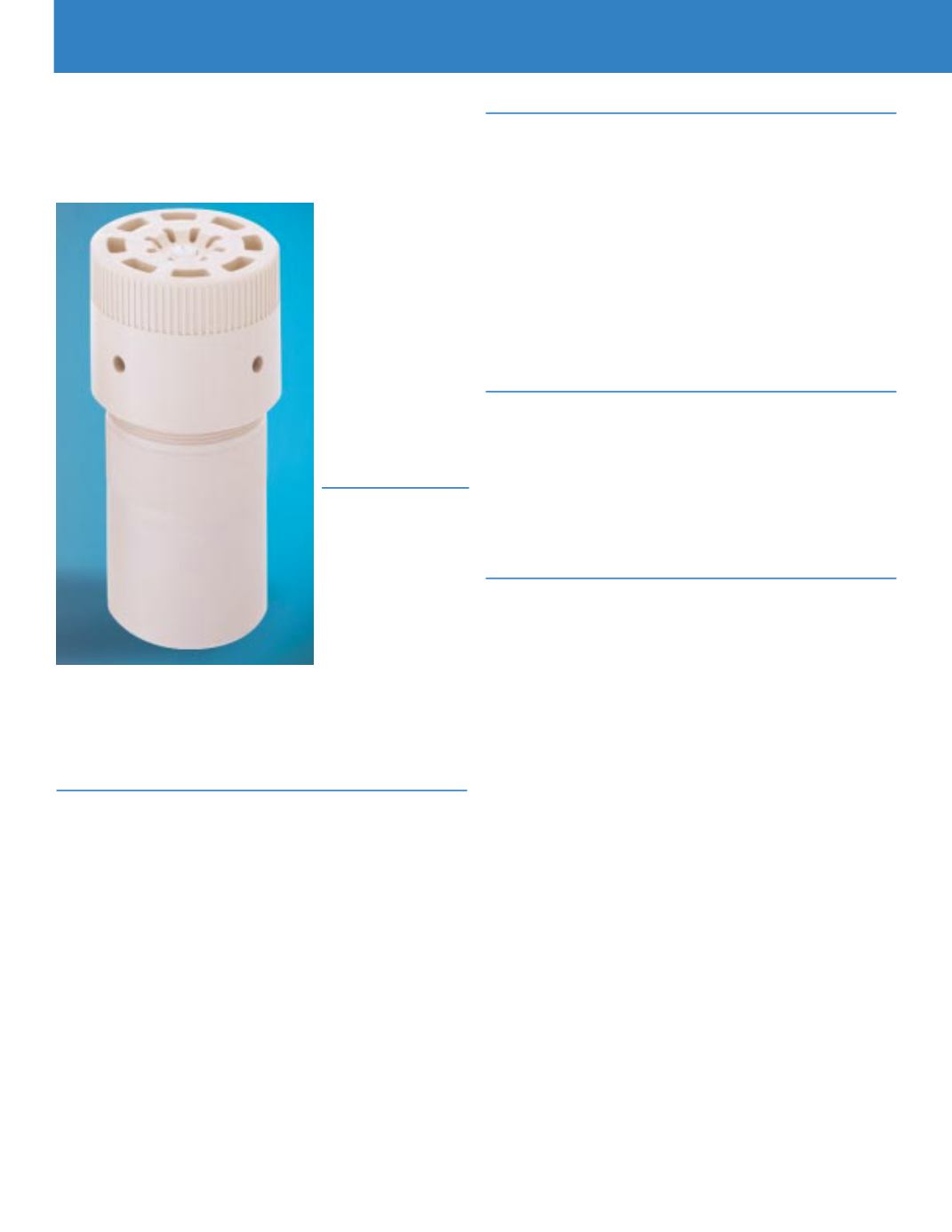
9
Parr Instrument
Microwave Digestion Bombs
Bulletin 4700
4782
45 mL - 250 °C
1200 psig
4782 Microwave Digestion Bomb
Unique Safety Features
S
everal unique sealing and safety features have been incor-
porated into the design of these vessels. The Teflon
sample cup is closed with a self-sealing, Teflon O-ring
which eliminates the need to pre-load the cup in order to secure a
tight seal. This also eliminates the effects of differential thermal
expansion during heating and cooling cycles while providing a
chemically inert, all-Teflon system.
For overpressure protection, the closure in these bombs
includes a compressible relief disc which operates in conjunction
with the O-ring cup seal to release any excess pressure if the
internal pressure should exceed a point at which it might destroy
the bomb and oven. When pressure in the bomb reaches approxi-
mately 1500 psi, the relief disc will be compressed sufficiently to
release the support for the O-ring. At this point, the unsupported
O-ring will blow out, releasing pressure from within the cup. In
most cases all parts of the bomb except the O-ring will be
reusable after this event if they are promptly and carefully
cleaned and inspected following the pressure release.
A Built-in Pressure Indicator
A
s pressure in the sample cup increases and the relief
disc is compressed, a retaining screw, which is normally
flush with the top of the bomb cap, will protrude above
the top surface. The head of this screw will rise approximately
1/32 inch for each 500 psi of pressure in the bomb. Thus, by
monitoring the extension of the screw head, the user will have
a visual estimation of the pressure within the bomb.
This release mechanism has been designed to protect against
the relatively gradual pressure build-up which can result from
overheating the contents of the bomb. But no relief mechanism
can protect against the destructive forces produced by materials
which detonate or explode within a vessel of this type.
A Microwave-Transparent Body
T
he body and screw cap for these bombs are made of a
new, microwave-transparent polymer which has good
mechanical strength at temperatures up to 150 °C, and
which serves also as an excellent heat insulator for the Teflon
sample cup. Since heating is developed internally within the cup,
temperatures in the outer, high strength body will seldom
exceed 50 °C.
Pressure and Temperature
Limits
W
orking pressures up to 1200 psi (8.27 Mpa) and
reactant temperatures up to 250 °C can be developed
safely in these bombs, but these limits must not be
exceeded. Obviously, it is much easier to specify these limits than
it is to describe how to ensure that they are carefully observed,
since there is not pressure gage on these vessels and no internal
temperature probe. Actually, the 1200 psi pressure rating
assumes that the containment parts of the vessel will always
remain at temperatures below 50 °C. This will normally be the
case, since microwave energy is directed into the sample itself
and not into the containment vessel. Although high temperatures
are developed within the sample, this is accomplished without
the introduction of large amounts of heat. And the energy that is
directed into the sample is rapidly dissipated into the Teflon cup
and the outer vessel. The bomb itself will become warm to the
touch as the contents cool, but it should not reach temperatures
above 50 °C.
Users can get a preliminary estimate of the effective heating
rate of their microwave oven by heating a small amount of the
sample and its digestion medium in an open Teflon cup, and
observing the time required to bring the medium to boiling. Most
domestic ovens will generate internal temperatures in the range
of 200 °C within one minute when using the 4781 or 4782 bomb.
More powerful units will be significantly faster. After removing
the bomb from the oven it normally will cool down to ambient
temperature within 20 or 30 minutes with forced air circulation.
Excessive deformation of the cup, it’s sealing ring, or significant
acid leakage are clear indications that excessive temperatures
and/or pressures are being generated.


